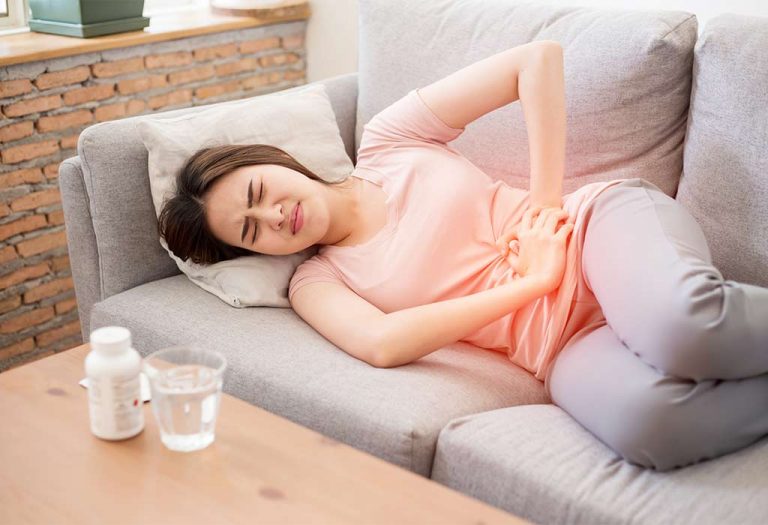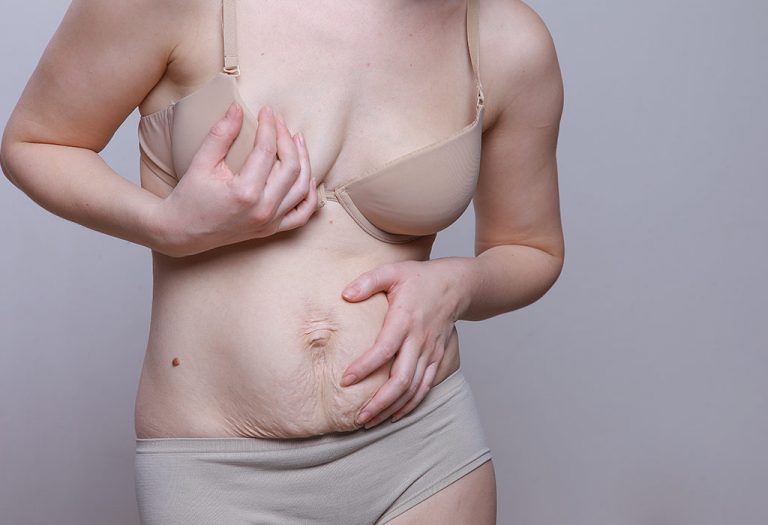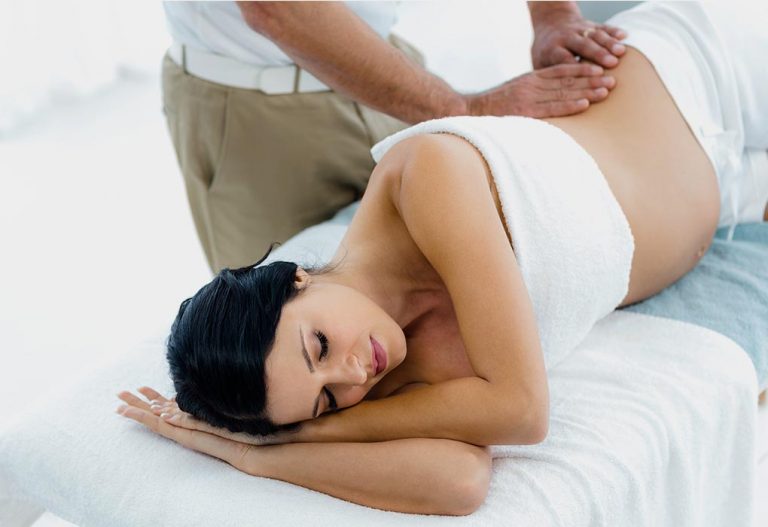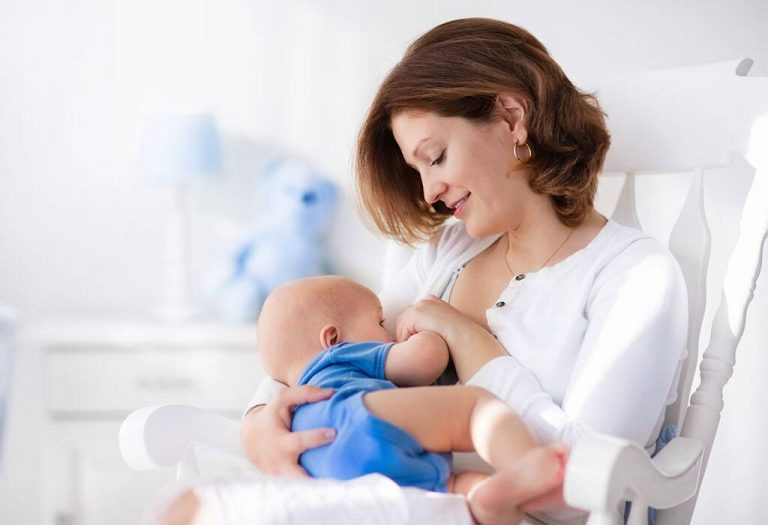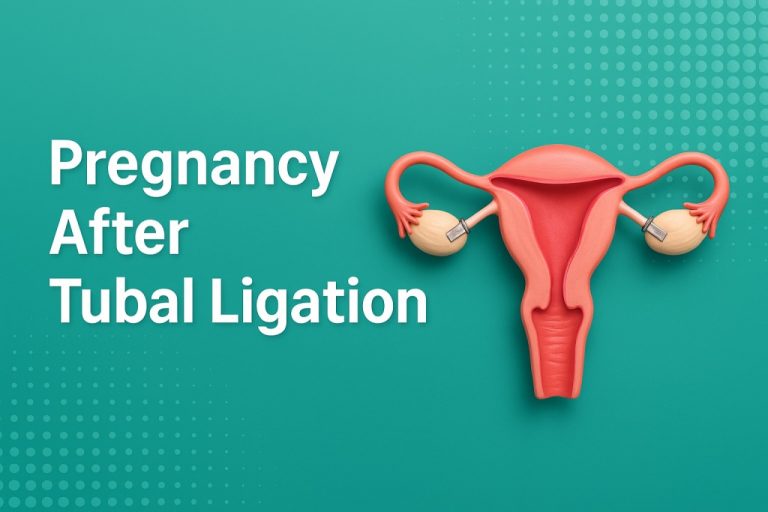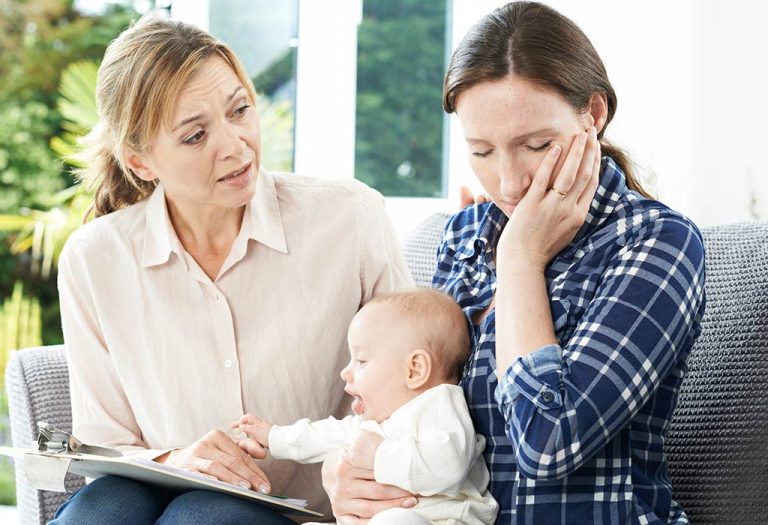Postpartum Cramps: Causes & Treatments
- What Are Postpartum Cramps?
- What Are the Causes of Cramping After Birth?
- How Long Will the After-Delivery Cramps Last?
- Ways to Treat Postpartum Cramps
- Home Remedies to Relieve Afterbirth Pains
- When to Visit a Doctor
- FAQs
Childbirth is a miraculous journey filled with moments of joy, anticipation, and challenges. When you think the most arduous part is behind you, your body might surprise you with postpartum cramps. These aches, often reminiscent of menstrual pains, are a natural aftermath of giving birth. After birth cramping is your body’s way of contracting the uterus back to its pre-pregnancy size, which is an essential part of recovery. While they might catch many new mothers off guard, understanding the causes and available treatments can offer much-needed relief. In this guide, we’ll delve deep into postnatal cramps, offering insights, remedies, and tips to navigate this often-overlooked aspect of motherhood.
What Are Postpartum Cramps?
Postpartum cramps are the uterus’s contractions as it returns to its pre-pregnancy size (7), often feeling like intense menstrual pains. For many mothers, especially those with multiple pregnancies, these post pregnancy cramps can escalate to severe cramping, reminiscent of labour contractions. This discomfort is a natural response following childbirth and is exacerbated during breastfeeding due to the hormone oxytocin.
What Are the Causes of Cramping After Birth?
Cramping after birth, while discomforting, is a natural phenomenon that plays a vital role in post-pregnancy recovery. New mothers need to understand what’s happening inside their bodies and why. Let’s delve into the primary causes of these postpartum cramps.
1. Uterine Involution
As previously stated, the uterus undergoes involution following childbirth, a natural process in which it contracts and returns to its original size. This contraction and tightening of the uterine muscles leads to the cramping sensations experienced by new mothers (1).
2. Breastfeeding
When a mother breastfeeds her newborn, her body releases oxytocin. This hormone facilitates milk production and induces uterine contractions (8). As a result, mothers might notice more pronounced cramps during or shortly after nursing sessions.
3. Blood Clot Expulsion
After birth, the body removes extra tissue and blood from the uterus. As the uterus contracts, it helps push out blood clots formed inside, which can cause cramping sensations.
4. Previous Pregnancies
Mothers who’ve had multiple pregnancies often report more intense postpartum cramps. With each successive pregnancy, the uterus becomes more efficient at contracting and returning to its pre-pregnancy size, leading to more potent cramping sensations.
5. Healing of the Placental Site
Once the placenta is delivered, the area where it was attached to the uterus begins to heal. As it heals, the uterus contracts to reduce the size of the blood vessels at this site, which can contribute to the overall cramping sensation.
How Long Will the After-Delivery Cramps Last?
The journey of motherhood begins with many challenges, and new mothers often ask about the duration of cramps after giving birth. Although discomforting, these postpartum contractions indicate that the body is healing and reverting to its state before pregnancy.
For most women, cramps after giving birth usually last for 2 to 3 days post-delivery (5). However, the intensity and duration can vary based on several factors:
1. First-time vs. Subsequent Deliveries
Mothers delivering for the first time often experience milder cramps that diminish faster. In contrast, mothers with subsequent deliveries might experience more intense contractions that last longer, sometimes up to a week or more.
2. Breastfeeding
As mentioned earlier, breastfeeding triggers the release of oxytocin, which can lead to increased cramping. Therefore, mothers who breastfeed might notice these cramps more frequently, especially during nursing sessions.
3. Natural Birth vs. C-Section
While both types of deliveries can lead to postpartum contractions, some mothers who’ve had C-sections report slightly milder cramps. However, this isn’t a strict rule, and many factors, including individual pain tolerance, play a role.
4. Physical Activity
Engaging in physical activity soon after delivery might prolong the cramps for some women. It’s crucial to find a balance, listen to your body’s cues, and not overexert yourself.
Ways to Treat Postpartum Cramps
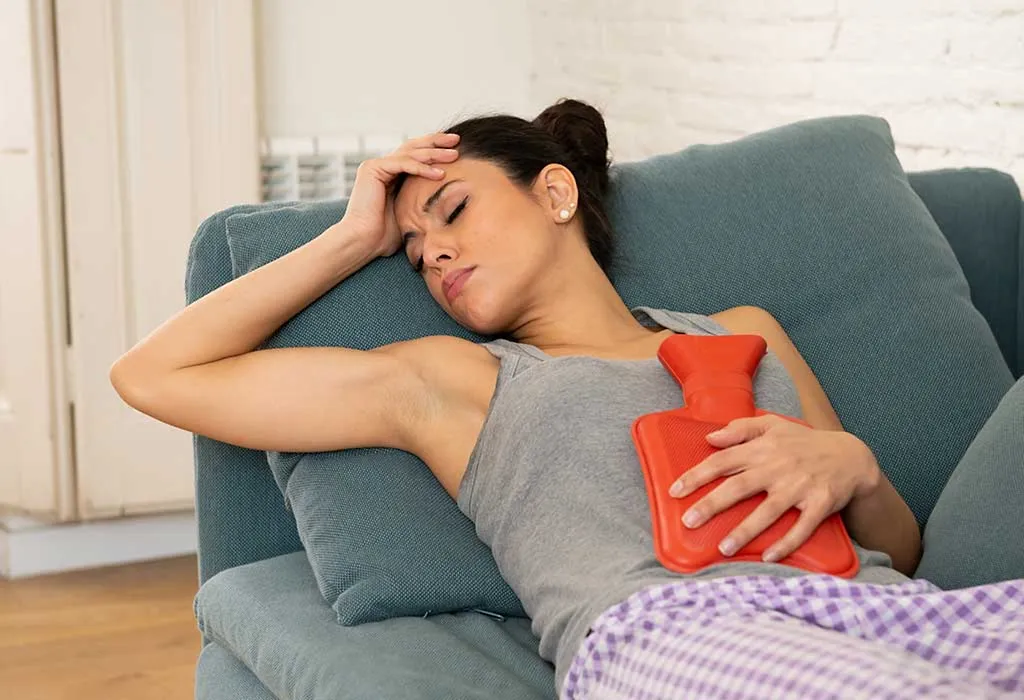
Experiencing cramps after childbirth can be a jarring contrast to the joy of welcoming a new life into the world. However, these pains are a natural part of the recovery process. Thankfully, there are several methods mothers can adopt for postpartum cramp relief, making the healing journey smoother and more comfortable.
- Over-the-Counter Pain Relievers: Consult your healthcare provider about taking pain relievers like ibuprofen or acetaminophen (4). These can effectively reduce the discomfort from postpartum cramps and are often safe for breastfeeding mothers.
- Warm Compress: A heating pad on the lower abdomen can soothe the muscles and alleviate cramping after childbirth (3). It’s essential to ensure that the heat is not too intense to prevent any risk of skin burns.
- Hydration: Drinking plenty of water can help ease muscle contractions. Being well-hydrated also aids in milk production for breastfeeding mothers.
- Gentle Massage: A gentle massage in the abdominal area can relieve postpartum cramps. It helps relax muscles and enhances blood circulation.
- Posture and Rest: Maintaining a good posture, especially during breastfeeding, can help reduce the strain on abdominal muscles. Also, ensure you get adequate rest; lying down often eases the pressure on the uterus, providing relief.
- Warm Bath: Immersing oneself in a warm bath can be therapeutic. It helps relax the entire body and specifically targets and eases postpartum cramps.
Home Remedies to Relieve Afterbirth Pains
After birth cramping can be uncomfortable, but it’s a natural part of the postpartum recovery process as your uterus returns to its original size. Thankfully, several home remedies can help ease these pains, offering relief and comfort during this phase.
1. Use a Warm Compress
Applying a warm compress or heating pad to your lower abdomen can help relax the uterine muscles and reduce cramping. The heat improves blood flow to the area, soothing discomfort effectively. Use a heating pad for 15-20 minutes at a time or a warm towel for a similar effect.
2. Practice Deep Breathing
Engaging in slow, deep breathing exercises helps alleviate pain by relaxing your body and calming the nervous system. Breathe in slowly for four counts, hold for a few seconds, and exhale for six counts. Doing this regularly can help manage cramping more effectively and improve overall relaxation.
3. Stay Hydrated
Drinking plenty of water keeps you hydrated, which is essential for postpartum recovery. Dehydration can worsen uterine cramps, so aim to drink at least 8-10 glasses of water daily. Herbal teas like chamomile or ginger can be particularly helpful due to their anti-inflammatory and soothing properties.
4. Massage Your Abdomen
Gently massaging your lower abdomen in circular motions can help stimulate blood flow and reduce the intensity of uterine contractions. Use light pressure and, if you prefer, a natural oil like coconut or olive oil to make the massage more soothing.
5. Take a Warm Bath
A warm bath provides overall relaxation while targeting abdominal discomfort. Add Epsom salts or a few drops of essential oils like lavender for added pain relief. Spend 20-30 minutes soaking to feel the full benefits of the warm water.
6. Use Essential Oils
Essential oils like lavender or peppermint have pain-relieving and anti-inflammatory properties. Dilute a few drops with a carrier oil like almond or coconut oil, and gently massage it onto your abdomen. Alternatively, use a diffuser to inhale the calming aroma.
7. Breastfeed Frequently
Although breastfeeding can initially intensify cramps due to the release of oxytocin, it helps your uterus shrink back to its pre-pregnancy size faster. This process reduces the overall duration of cramping, making it a beneficial, though temporary, discomfort.
8. Rest and Elevate Your Feet
Postpartum recovery demands ample rest. Lying down with your feet elevated improves circulation, reduces swelling, and helps minimise afterbirth pains. Use pillows to prop up your legs while you relax.
9. Opt for Over-the-Counter Pain Relief (if needed)
If the pain becomes too intense, consult your doctor about safe over-the-counter options like ibuprofen or acetaminophen. These medications can provide temporary relief while you continue using other natural remedies to support healing.
When to Visit a Doctor
While cramping after delivery is a standard part of the postpartum experience, it’s vital to differentiate between typical cramps and symptoms that may signal a more severe condition. Continuous pain or cramping three months postpartum and beyond is uncommon and might warrant a medical check-up. Let’s delve into the signs suggesting a doctor visit might be necessary.
- Persistent Pain: If you’re still experiencing severe cramping after the initial postpartum weeks, especially cramping 3 months postpartum or later, it’s essential to seek medical advice. Prolonged pain could be indicative of an underlying issue.
- Foul-smelling Discharge: Any discharge with a foul odour could be a sign of an infection. Coupled with cramping, this is a clear indication that medical intervention is needed.
- High Fever: A high fever accompanying cramping after delivery is a red flag. This could suggest an infection or another medical complication.
- Heavy Bleeding: While some bleeding after delivery is standard, passing large clots or soaking through a pad within an hour is not. If heavy bleeding accompanies your cramps, it’s crucial to see a doctor (2).
- Painful Urination: Experiencing a burning sensation while urinating and postpartum cramps might indicate a urinary tract infection (6).
- Pain in One Specific Area: If the cramping is localised to one area and doesn’t seem to subside, it could indicate a retained placenta or another complication.
Motherhood is undoubtedly rewarding, but it also comes with challenges. Being vigilant about unusual symptoms and opting for regular postpartum check-ups can ensure that any potential complications are addressed timely. Always prioritise your health; a healthy mother is fundamental to a happy family.
FAQs
1. Are there any long-term effects of postpartum cramps?
In most cases, postpartum cramps resolve within a few weeks after childbirth and do not have any long-term effects. However, for some women, especially those who experience severe or persistent cramping, there may be a lingering impact on their physical and emotional well-being.
2. How do postpartum cramps influence postnatal recovery?
Postpartum cramps are part of the overall postnatal recovery process. While they can be uncomfortable, they are a natural and necessary part of the body’s healing after childbirth. The contractions help the uterus return to its pre-pregnancy size and expel any remaining tissue or blood.
Navigating the postpartum period requires patience, understanding, and self-care. While cramps after delivery are a natural part of the recovery journey, knowing when they’re typical and when they might signal a more significant concern is vital. Always prioritise your well-being, and remember that seeking help or clarification when in doubt is a sign of strength and wisdom, ensuring the best for both you and your baby.
References/Resources:
1. Deussen. A. R, Ashwood. P, Martis. R, Stewart. F, Grzeskowiak. L. E; Relief of pain due to uterine cramping/involution after birth; Cochrane Library; https://www.ncbi.nlm.nih.gov/pmc/articles/PMC8094397/; October 2020
2. Warning signs of postpartum health problems; March of Dimes; https://www.marchofdimes.org/find-support/topics/postpartum/warning-signs-postpartum-health-problems
3. Pain Management; University of Rochester Medical Center; https://www.urmc.rochester.edu/ob-gyn/obstetrics/after-delivery/pain-management.aspx
4. Gopman. S; Prenatal and Postpartum Care of Women with Substance Use Disorders; Obstetrics and Gynecology Clinics of North America; https://www.sciencedirect.com/science/article/abs/pii/S0889854514000114; June 2014
5. Your body after the birth (the first 6 weeks); Tommy’s; https://www.tommys.org/pregnancy-information/after-birth/your-body-after-birth
6. Recovering From Delivery; Nemours KidsHealth; https://kidshealth.org/en/parents/recovering-delivery.html
7. Your body after baby: The first 6 weeks; March of Dimes; https://www.marchofdimes.org/find-support/topics/postpartum/your-body-after-baby-first-6-weeks
8. Nursing Cramps; American Academy of Pediatrics; https://www.healthychildren.org/English/ages-stages/baby/breastfeeding/Pages/Nursing-Cramps.aspx
Also Read:
Postpartum Fatigue
Stomach Pain After Delivery
Joint Pain After Pregnancy
Back Pain After Pregnancy
Was This Article Helpful?
Parenting is a huge responsibility, for you as a caregiver, but also for us as a parenting content platform. We understand that and take our responsibility of creating credible content seriously. FirstCry Parenting articles are written and published only after extensive research using factually sound references to deliver quality content that is accurate, validated by experts, and completely reliable. To understand how we go about creating content that is credible, read our editorial policy here.






